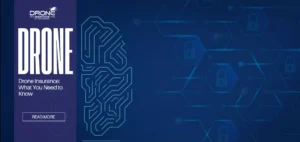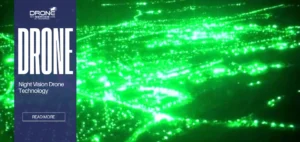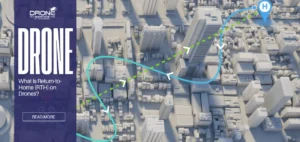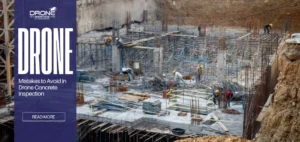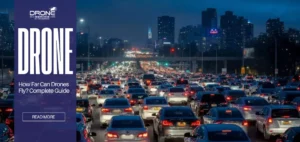The Future of Courier Companies: What Benefits Do You Enjoy With Delivery Drones
Unmanned aerial vehicles, also called drones, have emerged to help supply chain management for the past years. Drones have increasingly entered the discussion about delivery as technology is progressing. Drone delivery utilization serves as an alternative delivery method for most companies.
Retailers such as Amazon are using delivery drones. Drones were for military use due to high prices and specialized requirements. The future of drones is happening now with various commercial services.
The drone delivery technology application and use have expanded to companies. Drone technology has vast utility, especially in the demands of customers and the rapid changes of the commercial industry.
The Future of Logistics Industry with Drone Delivery Technology
It’s interesting to consider the impact of drones on the logistics industry in the coming years. Although legality and regulations have limitations, delivery by UAV took off with some drone delivery companies.
The drone delivery technology allows a wide range of applications. Drone delivery is now a solution for congested urban areas in the logistics sector. Transportation and logistics companies are beginning to see the advantage of professional drone services.
Many businesses are looking to UAVs to enhance delivery times, expand delivery mileage, and gain a competitive advantage. The global professional delivery drone service was at 520.0 million USD in 2019—the value expected to increase a CAGR of 44.2 per cent to 9.51 billion USD by 2027.
The Advantage and Disadvantages of Utilizing Drones for Delivery
A company with a drone delivery service creates a valued worker and client experience. Unmanned aerial vehicles can improve staff safety, customer satisfaction, and delivery time.
Advantages of commercial drones for logistics and deliveries in short distances include:
1. Faster Delivery Time and Efficiency
Packages delivered by drones arrive faster. Deliveries are not limited to roads, and customers can get their packages sooner without traffic.
2. Reduced Resources and Labor Costs
Fewer automobiles such as motorcycles or vans help reduce the budget for gasoline. Courier and retail companies reduce their costs on gas. Drone delivery companies focus on charging and maintenance since labor costs will rise over time.
3. Reduced Pollution
Drones run with batteries. The reduced carbon emissions help the environment to a degree. Reduced traffic and carbon emissions help reduce air and noise pollution.
4. Accessible Data Collection and Warehouse Inventories
Professional drone services can scale up warehouses and scan the barcodes on stored packages. It saves staff from climbing up high shelves to check which package is out for delivery or transport.
Autonomous drone services provide a lot of independence for companies, and there are still some disadvantages to solve:
1. Expensive Initial Investment
UAV services are still in their early stages in the logistics industry. Various hardware expenses are still high, resulting in high procurement costs.
2. Further Improvements for Drone Batteries
Drones’ batteries can quickly deplete in just a few minutes. While delivering things to a specific place, delivery drones quickly drain their batteries. If delivery fails, it may result in market complaints.
3. Unprotected Privacy
Drone package delivery employs cameras when delivering to target places. Drone cameras continuously record actual location, property, and recipient without consent. There might be companies that will use this personal information without proper permission from customers.
4. Risky Delivery Destinations
There are chances that a delivery drone will get stolen along with its package. Companies will no longer govern their assets once they are gone.
Four Known Commercial Companies that Support Delivery Drones
Commercial drone services are growing in popularity. Retail and logistic companies provide efficient delivery methods with drones. Although delivery drones have restrictions, these companies are pioneering UAV delivery and the future.
It’s worth looking at the companies that are initiating delivery drone services. Here is a list of drone delivery companies supporting uncrewed aerial vehicle delivery.
Amazon Prime Air
Amazon is in the process of analyzing and creating its Prime Air UAV services. Development and testing are happening in countries like the United Kingdom, the United States, France, Israel, and Austria.
Amazon Prime Air can transport packages weighing between 5 pounds or less using small drones.
In 2013, Amazon began testing delivery drones to deliver products to consumers’ doorsteps in 30 minutes or less. The business filed a petition with the FAA in August 2019 to have those plans approved. Amazon stated in its petition that deliveries would take place in low-density regions with parcels less than 5 pounds.
UPS Flight Forward
UPS Flight Forward specializes in drone delivery which launched in 2019. Flight Forward also acquired the whole Part 135 Standard certification from the Federal Aviation Administration on October 1, 2019. The FAA allows Flight Forward free autonomous drone services in the United States.
UPS Flight Forward partnered with Matternet in 2019. Matternet assists with medical supply delivery, in various locations, to WakeMed Hospital in North Carolina.
UPS Flight Forward and CVS joined in 2020. The partnership offers prescription medicine delivery from a CVS drugstore to The Villages in Florida. Flight Forward has also collaborated with Wingcopter to expand its drone package delivery for various applications. The partnership aims to provide drone services to the United States and international audiences.
Wingcopter
Wingcopter began its career as a drone manufacturer and provided professional drone services.
Wingcopter operates as a commercial drone service in international marketplaces with Unicef cooperation. The commercial services expanded to include the South Pacific and Vanuatu. In Ireland, Wingcopter drones have worked as vaccine delivery and transportation.
Wingcopter drone delivery conducted the world’s first uncrewed aerial vehicle insulin delivery.
FedEx
FedEx is one of the drone delivery companies that is a significant player in delivery by drones. FedEx Corporation is a US-based international delivery service company with headquarters in Memphis, Tennessee.
FedEx registered its drone package delivery services alongside investors in UAV technology with the US Patent and Trademark Office. FedEx also announced in 2018 that it would begin using UAVs at Memphis International Airport soon. Drones would repair aeroplane parts and assess runway and aircraft conditions for professional maintenance on the ground.
Delivering by Drones: Changing the Future of Logistics
Drone delivery will undoubtedly become a new force to boost economic and social growth as science and technology advance.
ZenaDrone 1000 redefines delivery drones with its highly customizable features. ZenaDrone software integration helps item location and optimize delivery efficiency.
